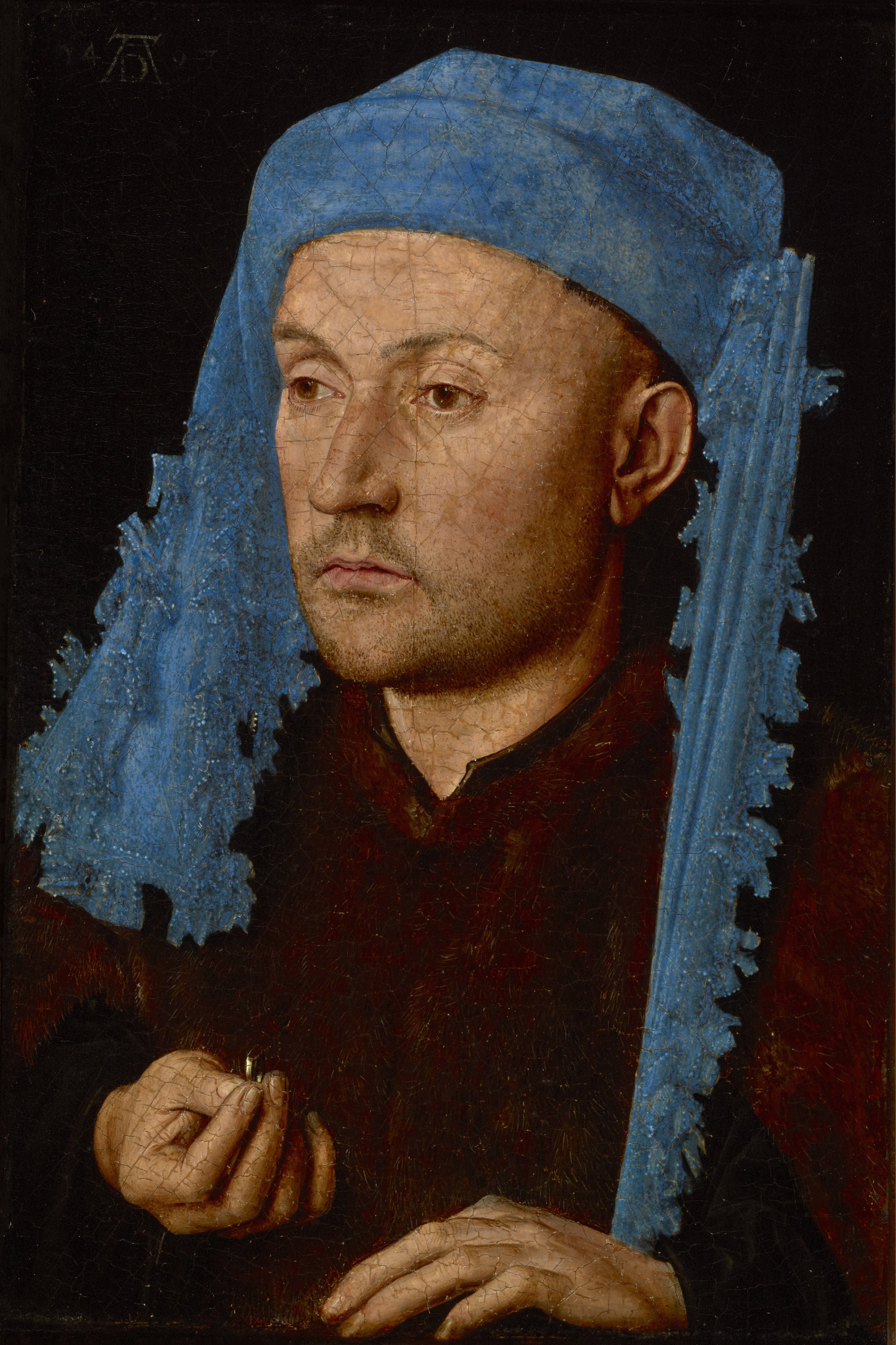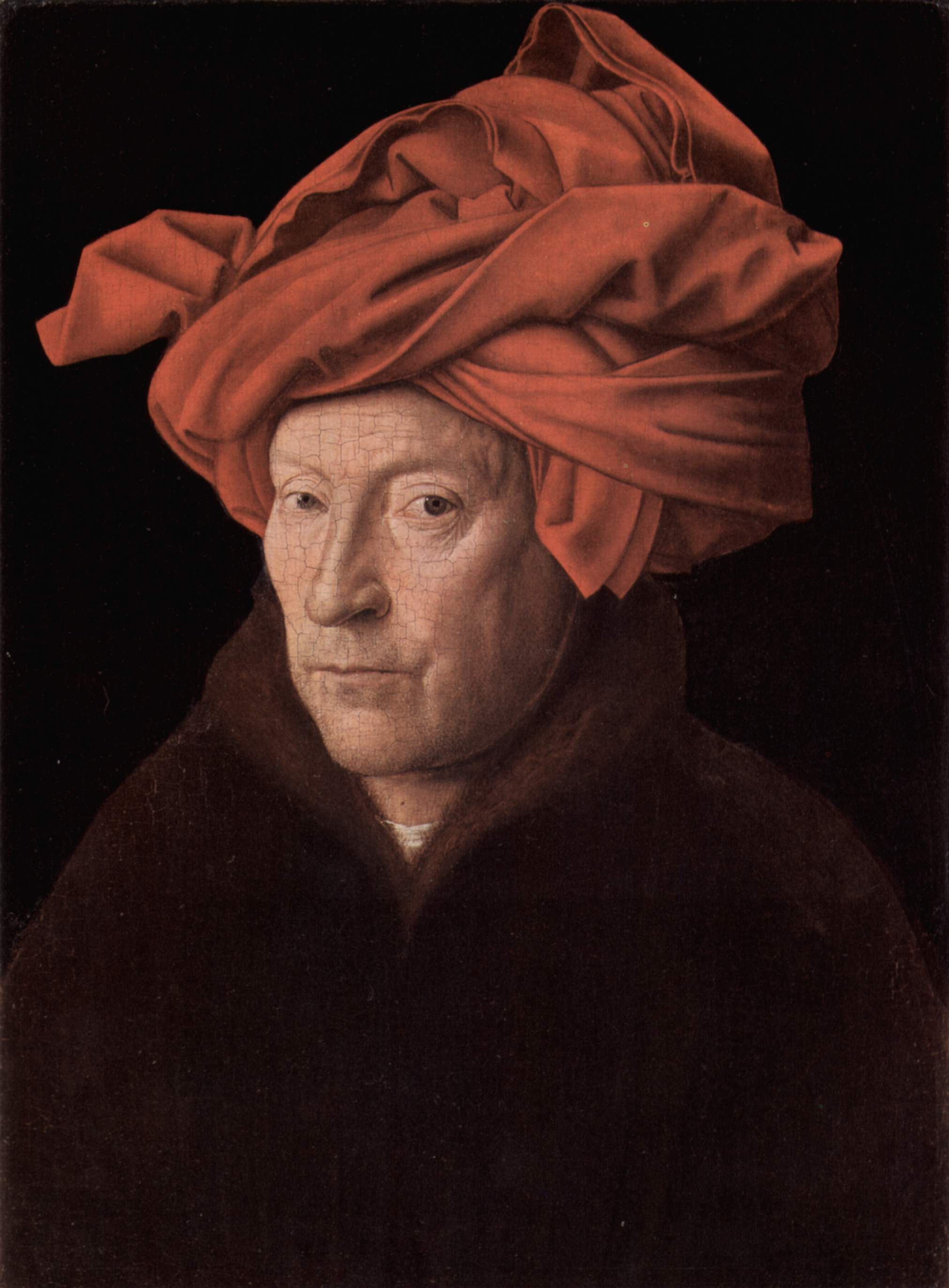Portrait of a Man with a Blue Chaperon (or Portrait of a Man with a Blue Hood, earlier known as Portrait of a Jeweler or Man with a Ring) is a very small oil-on-panel portrait of an unidentified man by the Early Netherlandish painter Jan van Eyck. The painting was commissioned and completed sometime around 1430. It contains a number of elements typical of van Eyck's secular portraits, including a slightly oversized head, a dark and flat background, forensic attention to the small details and textures of the man's face, and illusionistic devices. Artists did not give titles to their works during the Northern Renaissance period, and as with any portrait of a sitter whose identity is lost, the painting has attracted generic titles over the years. It had long been thought that the ring held in the man's right hand was meant as an indication of his profession as a jeweler or goldsmith, so the painting was long titled related variants. More recently, the ring has been interpreted as an emblem of betrothal, so the titles historians and publications have given it describe the colour or form of the headdress. The painting was attributed to van Eyck in the late 19th century. This was challenged by several art historians until a 1991 cleaning, when infra-red photography revealed an underdrawing and methods of handling of oil that were unmistakably van Eyck's.




Man in a Blue Cap
oil on wood • 13.2 x 19.1 cm
 Jan van Eyck
Jan van Eyck